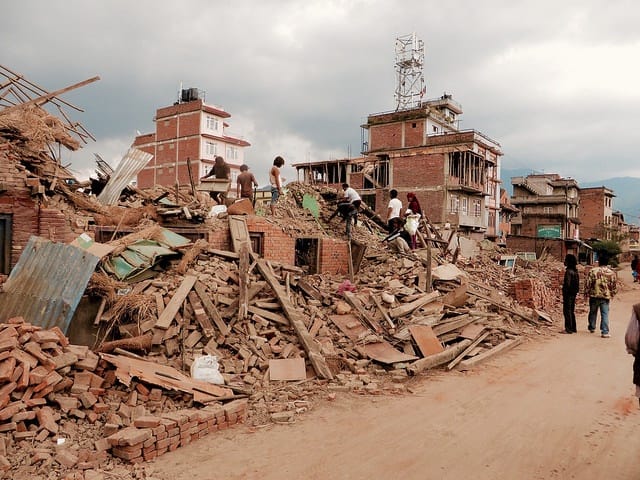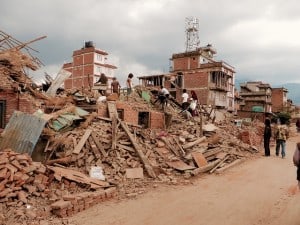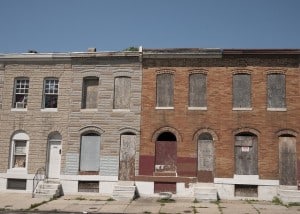Images of crisis fill our newsfeeds. Nepal? Crisis. Mediterranean? Crisis. Baltimore? Crisis. What are we seeing? Natural disaster? Irresponsible ship-captains and illegal humans? Violent thugs? I grew up in California, I know a bit about earthquakes, so I’ll start there.
We’re seeing the effects of our faults.
Faults naturally rupture and shift in order to relieve tension in a constantly changing world. What we see in each of these circumstances could rightly be considered a fault in this sense — a momentary rupture, a temporary crisis, a tragic accident. Much commentary will focus on these stories as a passing crisis (pushing traffic and trending hashtags). But what is happening here is more than a crisis; this tremor is more than a trend, this violence is more than a viral video. To actually understand what’s happening when a fault ruptures we must ask: What’s below the surface?
When we ask this question we realize there is another fault here — the moral culpability of our social, political, and economic systems — and this fault, this culpability, is by definition ours. Yours and mine. The suffering we see now is the result of deeply rooted poverty and systemic injustice. Centuries of tension waiting for resolution. This is, in no uncertain terms, our fault.
Before we judge those rioting in Baltimore we must understand the tension behind their behavior. As Greg Boyle, SJ likes to say, “We must stand in awe at what the poor have to carry instead of standing in judgment at how they carry it.” It’s easy to see someone breaking into a check-cashing storefront and say, “You shouldn’t do that.” It’s more difficult to see a bank’s systematic efforts to profit off of people’s need and say, “You shouldn’t do that.” We must do the difficult. We must see beneath the surface.
Look at the images more carefully and what do we see?
Those homes in Nepal were built by people without enough resources in the first place. Their hands are rough from years of difficult work not merely the past few days of moving bricks and digging through dust to find their loved ones. Nepal is one of the poorest countries in the world. They’ve been moving bricks and digging through the dust for decades. Did we care to notice?
The faces and clothes of the immigrants climbing the fences here in southern Spain, or worse, their bodies being washed up on European shores, are already covered in sweat and blood, their shoes (if they have them) already worn from years of wandering. These women, men, and children aren’t invading, they’re fleeing. Have we welcomed them?
And Baltimore? The Wire told this story years ago…and we’re surprised to see it revealed today? We loved The Wire, we praised The Wire…but did we actually see or hear or understand what this story was telling us?
When a fault shifts or ruptures we see the violent result of an underlying tension. These eruptions are more than mere anomalies or ‘unjustifiable’ outbursts. We must see in Nepal not only ‘natural disaster’ but the poverty that makes buildings unstable in the first place. We must see in the Mediterranean not only a tragic ‘accident’ but a pattern of poverty and migration that causes mass drowning (or its cruel twin – dehydration) with horrifying regularity. And in Baltimore we must see more than angry teens expressing frustration and hopelessness (in the language every angry teen knows best — outburst), but also decades of systematic exclusion and social silencing that erupts now in violent speech.
Violence is condemnable precisely because we are members of one another. To understand the violence of a riot as the response to the violence of systemic exclusion, chronic incarceration, or a pattern of the lethal use of force is not to condone violence…only to place it in the category of response so that we can begin to talk about responsibility. This is our responsibility. All of us. We belong to each other. The fault is ours.
We must see the fault. We can’t ignore its presence even in the silent years when all is well, when there are no earthquakes or drownings or riots. The fault is always there and to ignore it is to pretend that the tension caused by our actions or inactions won’t one day erupt. To ignore the fault is to live without care or responsibility for those who will suffer most severely when it does. To ignore the fault is to perpetuate the explosive force of hatred that smothers our solidarity, drowns our dreams, and burns our neighborhoods to the ground.
******
Earthquake Aftermath image courtesy Flickr user SIM Central and South East Asia, found here.
Baltimore Rowhouses image courtesy Flickr user Baltimore Heritage, found here.




